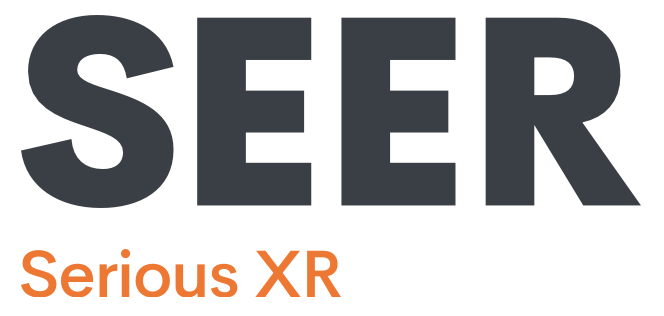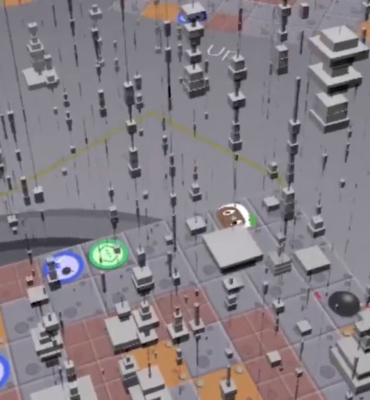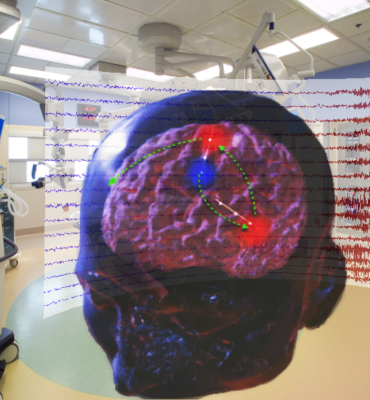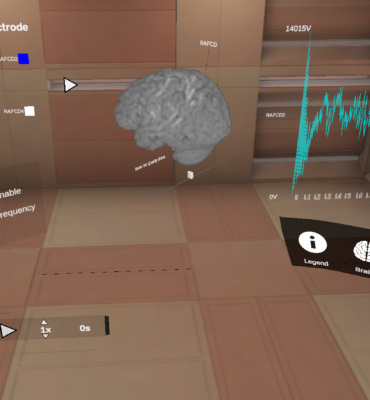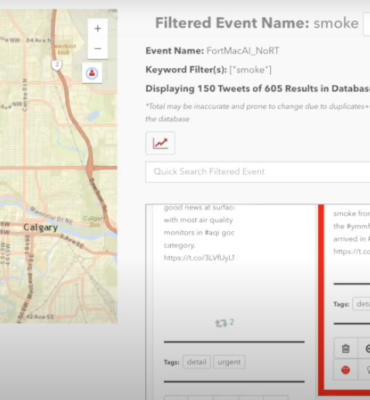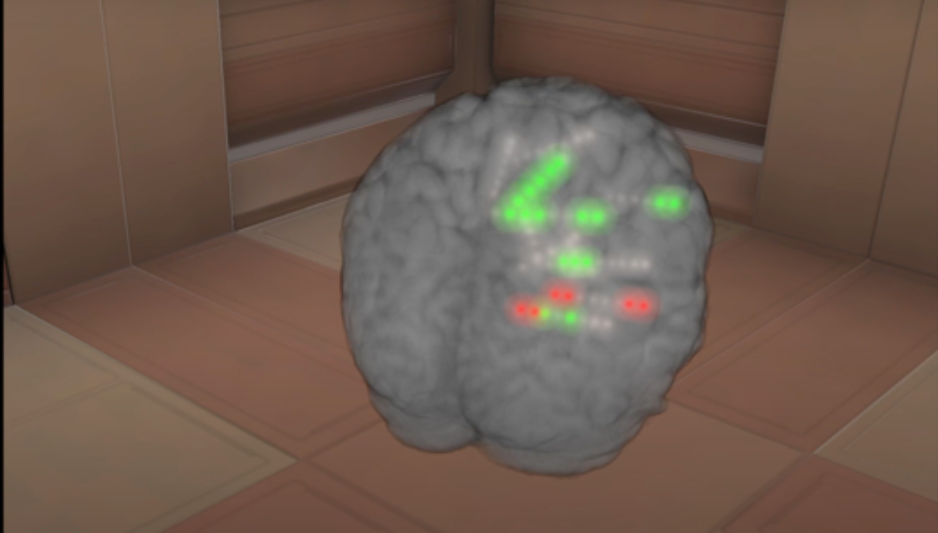
VR Integration Into The Epilepsy Clinical Workflow
In this project, we focus on improving epilepsy clinical workflow using VR to aid neurologists in better understanding seizure propagation. We also propose a video-based approach to elicit feedback from neurologists with limited availabilities in the VR design prototyping.
The significant growth of virtual reality (VR) applications in domains such as neuroscience and neurosurgery indicate a promising future of immersive solutions for non-gaming areas. Medical users in our study are from a small medical community and are experts on epilepsy diagnosis and treatment. A part of their work is focused on epilepsy surgical planning. These neurologists collect intracranial EEG data by implanting electrodes into a patient’s brain to support the diagnosis. Traditionally, they analyze this data together with a 2D on-screen representation of a 3D MRI brain scan.
Our HMD VR tool aims to help neurologists analyze and summarize epilepsy data by allowing them to visually examine the positions and responses of selected electrodes based on a patient’s MRI scan. We also sought to help neurologists understand spatiotemporal seizure propagation based on the implanted electrodes and EEG data.
We improved the approach for feedback collection from neurologists with tight schedules in the VR prototyping process. While developing a high-fidelity VR prototype to help neurologists analyze seizure propagation information for brain surgery planning, our neurologist collaborators’ limited availability reduced opportunities for them to give feedback on critical design decisions. We developed a design approach that allows experts to iteratively provide feedback on a VR prototype via video documentation, without needing to interact with VR software or hardware (Figure 3). These short videos allowed us to receive feedback about visual design choices over the course of a short ten-week prototyping process with three design iterations in which neurologists communicated design decisions via email and through short online meetings. Please refer to our paper [1] and the following video to find more about lessons learned and highlight practical challenges for adopting this kind of asynchronous video-based approach during VR prototyping.
You can find more about our seizure propagation visualization in our papers [2][3] and the following video:
Current and Past Team Members:
Zahra Aminolroaya, Seher Dawar, Hannah Sloan, Christian Roatis, Patrick Gharib
Acknowledgments
This work is funded by the Cumming School of Medicine at the University of Calgary and the NSERC Discovery Grant program RGPIN-2018-04764.
Project Publications:
- Zahra Aminolroaya, Wesley Willett, Samuel Wiebe, Colin B. Josephson, and Frank Maurer. Watch The Videos Whenever You Have Time: Asynchronously Involving Neurologists in VR Prototyping. AVI 2022, June 6–10, 2022, Frascati, Rome, Italy. © 2022 Association for Computing Machinery. ACM ISBN 978-1-4503-9719- 3/22/06…$15.00. https://doi.org/10.1145/3531073.3531181
- Zahra Aminolroaya, Seher Dawar, Colin B. Josephson, Samuel Wiebe, and Frank Maurer. 2020. Virtual Reality for Understanding Multidimensional Spatiotemporal Phenomena in Neuroscience. In Companion Proceedings of the 2020 Conference on Interactive Surfaces and Spaces (ISS ’20). Association for Computing Machinery, New York, NY, USA, 85–89. DOI:https://doi.org/10.1145/3380867.3426423
- Zahra Aminolroaya, Samuel Wiebe, Colin Bruce Josephson, Hannah Sloan, Christian Roatis, Patrick Abou Gharib, Frank Maurer, Kun Feng. EPES: Seizure Propagation Analysis in an Immersive Environment. In: Proceedings of the 2019 ACM International Conference on Interactive Surfaces and Spaces (ISS 2019), Daejon, Republic of Korea, 2019
